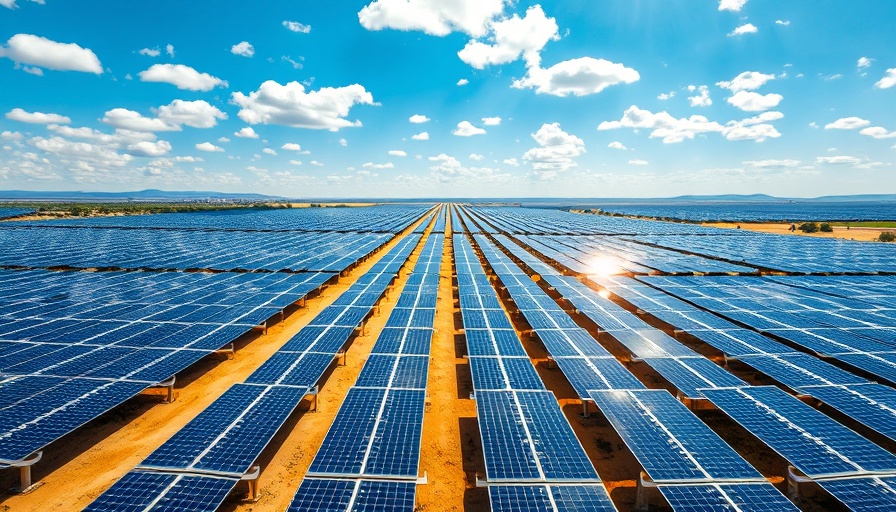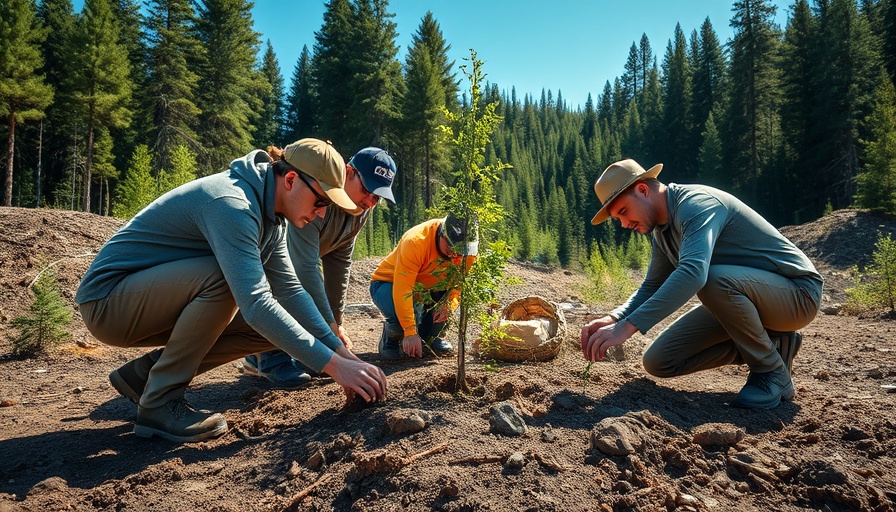
Medicine Hat's Saamis Solar Park: A Game-Changer for Urban Renewable Energy
In a significant leap towards urban sustainability, Canada is set to construct the Saamis Solar Park, a project that promises to be one of the largest solar power facilities in North America. Situated on a 1,600-acre site in Medicine Hat, Alberta, the park will deliver 325 megawatts (MW) of renewable energy once operational. It reflects a strategic decision to transform contaminated land into a thriving energy hub, accentuating the city's commitment to clean power.
Harnessing the Power of Contaminated Lands
The redevelopment of such a brownfield site—a former phosphogypsum storage area—presents a unique opportunity. Phosphogypsum, a byproduct of phosphate ore processing, poses environmental challenges when mishandled. By utilizing this land, the Saamis project not only mitigates health risks but also transforms a liability into a renewable energy asset. As Damian Bettles from DP Energy explains, this initiative not only serves to clean up the site but also advances Medicine Hat's transition to renewable energy sources.
A Bright Future for Medicine Hat
With an impressive average of 330 sunny days per year, Medicine Hat is primed for solar energy production. After gaining the necessary approvals starting from 2017, the city is now poised to commence construction, starting with an initial phase of 75 MW. Upon completion, the park could provide energy to approximately 100,000 households and is projected to offset about 350,000 tons of carbon emissions annually, paving the way for a cleaner future.
Economic and Social Impacts
The Saamis Solar Park is not just about harnessing sunlight; it is about generating jobs and promoting economic growth. During the construction and operational phases, the project will create numerous direct and indirect employment opportunities, stimulating the local economy significantly. This endeavor emphasizes the intersection between environmental responsibility and economic benefit, a vital consideration in today’s socio-political climate.
Local and Global Trends in Renewable Energy
As cities across the globe aim to transition to renewable energy, projects like Saamis offer valuable lessons. They illustrate how sustainable development can synergize with economic growth while addressing critical environmental issues. The initiative in Medicine Hat aligns with global trends towards urban solar installations, prominently featuring large-scale projects utilizing brownfield sites—a sustainable model for future developments.
As we amend our lifestyles and urban planning to prioritize sustainability, staying informed about such innovations is crucial. The Saamis Solar Park stands as a beacon of hope amidst the growing energy crisis, highlighting the potential of urban solar to drive meaningful change.
Engage with your community and local leaders to support renewable energy projects like Saamis—it’s a step toward a sustainable future for all.
 Add Row
Add Row  Add
Add 




Write A Comment